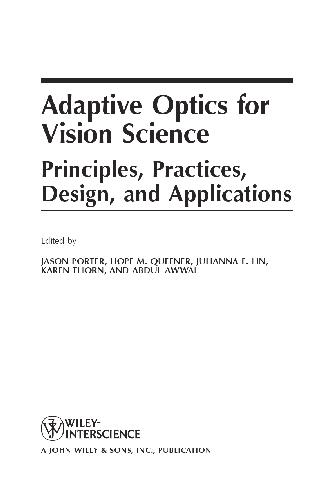موضوعات
آموزش و پرورش
ادبیات و زبان
پزشکی، دندانپزشکی و داروسازی
تاریخ و جغرافیا
داستان و رمان
دیگر
دین و فلسفه
روانشناسی
ریاضیات و آمار
سلامتی، تناسب اندام و رژیم غذایی
شیمی و پلیمر
علوم اجتماعی و حقوق
علوم زیستی و بیوتکنولوژی
فیزیک و نجوم
کامپیوتر و اینترنت
کتابهای کودکان و داستان
کسب و کار و اقتصاد
کشاورزی و دامپزشکی و غذا
معماری
مهندسی و فناوری
هنر و تئاتر
محصولات
So Long, See You Tomorrow - PDF
نویسندگان: خلاصه: This Orange Inheritance Edition of "So Long, See You Tomorrow" is published in association with the Orange Prize for Fiction. Books shape our lives and transform the way we see ourselves and each other. The best books are timeless and continue to be relevant generation after generation. "Vintage Classics" asked the winners of The Orange Prize for Fiction which books they would pass onto the next generation and why. Ann Patchett chose "So Long, See You Tomorrow". In rural Illinois, two tenant farmers share much, finally too much, until jealously leads to murder and suicide. A tenuous friendship between lonely teenagers - the narrator, whose mother has died young, and Cletus Smith, the troubled witness to his parent's misery - is shattered. After the murder and upheavals that follow, the boys never speak again. Fifty years on, the narrator attempts a reconstruction of those devastating events and the atonement of a lifetime's regret. "The novel comes from a place so deep inside the human soul that I cannot imagine a time its wisdom would not feel fresh and applicable". (Ann Patchett).Because of You (Avon Romantic Treasure) - PDF
نویسندگان: خلاصه: A Scandalous Wedding Pretty Samantha Northrup knew her duty was to marry, but this orphaned vicar's daughter wanted to be swept off her feet by someone whose kisses made her toes curl. She never dreamed her orderly life would be turned upside down when a mysterious stranger came knocking on her door one stormy night. And when they were found in a compromising position, she found herself marrying a man she barely knew . . . but couldn't resist. A Not So Convenient Marriage What Samantha doesn't know is that her unknown bridegroom is Yale Carderock, the disinherited son of a duke, banished by his father years before. Now the prodigal has returned—rich, but only somewhat reformed. Yale is bewitched by his bride's innocent fire, and he knows he's powerless to resist her awakening sensuality. But is this outcast from society worthy of her tender love?You and No Other - PDF
نویسندگان: خلاصه: The constraints of quiet widowhood have become too much for Lady Caroline Pearson to bear—especially now that her brother-in law has idiotically, and illegally, gambled away her house. Boldly, she confronts the new owner in person. But not only does the dashing rogue, James Ferrington, refuse to return Caroline's deed, he tries to take scandalous advantage of her as well. Sheepish and repentant, James arrives on Caroline's doorstep to make amends— unaware that the young widow and her eccentric aunt are intent on retaliation. James merely meant to seduce a bewitching minx and have done with it—and, suddenly, he's a kidnapped prisoner in Caroline's cellar. But most shocking of all, James realizes that he has no desire whatsoever to be free—for the audacious Caroline has inflamed his senses, destroyed his reason . . . and completely captured his heart.The 21 Irrefutable Laws of Leadership: Follow Them and People Will Follow You - Original PDF
نویسندگان: خلاصه: This is one of the few books that I have both read and taught on. There is much wisdom in this book, and in some ways, so much so that it is hard to keep up. This book has simple, yet elegant analogies, and it provides insight into a "better" way to manage. By following just one of the principles outlined in this book, a young or more mature leader will surely gain knowledge and be bettered by the experience.Veterinary Pharmacology and Therapeutics Tenth Edition - Original PDF
نویسندگان: خلاصه: Veterinary Pharmacology and Therapeutics, Tenth Edition is a fully updated and revised version of the gold-standard reference on the use of drug therapy in all major veterinary species. Provides current, detailed information on using drug therapies in all major domestic animal species Organized logically by drug class and treatment indication, with exhaustive information on the rational use of drugs in veterinary medicine Includes extensive tables of pharmacokinetic data, products available, and dosage regimens Adds new chapters on pharmaceutics, ophthalmic pharmacology, food animal pharmacology, and aquatic animal pharmacology Includes access to a companion website with the figures from the book in PowerPointAdvanced Methods in Family Therapy Research: a focus on validity and change - Original PDF
نویسندگان: خلاصه: I (L.J.) remember when I started graduate school as a new student in the field of marriage and family therapy (MFT). One of the required classes in my first semester was statistics. I was an engineering major and I enjoy math so I thought statistics would be fun. The teacher was great, and I learned a lot. The one downside to the experience was that the course was taught in the agriculture department. The class focused mostly on analysis of variance (ANOVA), and the instructor would draw a 2 × 2 or larger plot on the chalk- board and say something like, “You can randomly assign conditions to each square in your field, and then you plant your seeds in the randomly assigned quadrant, and you can ‘see’ what happens and calculate an ANOVA.” After a few class periods of plot drawing and hearing examples from agriculture, I felt like I was starting to learn what an ANOVA was and how to calculate it. But I was missing the application to people. So, being the good graduate student that I was, I raised my hand and asked, “How do you do this with people?” The instructor replied, “You don’t.” I was dumbfounded. Why was I taking this class if I could not apply what I was learning to people? Why was I taking this class from someone who was a fine teacher but did not know how to apply this information to people? As I progressed through graduate school and took other statistics and research methods courses, I was able to fill in the gaps and learn how to apply statistics to people. I also learned how much more compli- cated research was when trying to apply what I had learned about researching individual people to researching more complex configurations that included couples and families.The 16 Undeniable Laws of Communication: Apply Them and Make the Most of Your Message : Apply Them and Make the Most of Your Message - Epub + Converted Pdf
نویسندگان: خلاصه: The 16 Undeniable Laws of Communication: Apply Them and Make the Most of Your Message : Apply Them and Make the Most of Your MessageAdaptive Optics for Vision Science Principles Practices Design and Applications - Original PDF
نویسندگان: خلاصه: The high transverse resolution of retinal imaging systems equipped with adaptive optics provides a unique opportunity to record these eye move- ments with very high accuracy. Putnam et al. showed that it is possible to record the retinal location of a fixation target on discrete trials with an error at least 5 times smaller than the diameter of the smallest foveal cones [63]. We used this capability to measure the standard deviation of fixation positions FIGURE 1.7 Images of the cone mosaics of 10 subjects with normal color vision, obtained with the combined methods of adaptive optics imaging and retinal densi- tometry. The images are false colored so that blue, green, and red are used to repre- sent the S, M, and L cones, respectively. (The true colors of these cones are yellow, purple, and bluish-purple). The mosaics illustrate the enormous variability in L/M cone ratio. The L/M cone ratios are (A) 0.37, (B) 1.11, (C) 1.14, (D) 1.24, (E) 1.77, (F) 1.88, (G) 2.32, (H) 2.36, (I) 2.46, (J) 3.67, (K) 3.90, and (L) 16.54. The proportion of S cones is relatively constant across eyes, ranging from 3.9 to 6.6% of the total population. Images were taken either 1° or 1.25° from the foveal center. For two of the 10 subjects, two different retinal locations are shown. Panels (D) and (E) show images from nasal and temporal retinas, respectively, for one subject; (J) and (K) show images from nasal and temporal retinas for another subject. Images (C), (J), and (K) are from Roorda and Williams [52]. All other images were made by Heidi Hofer. (See insert for a color representation of this figure.) (From Williams and Hofer [57]. Reprinted with permission from The MIT Press.) across discrete fixation trials, obtaining values that ranged from 2.1 to 6.3 arcmin, with an average of 3.4 arcmin, in agreement with previous studies [63, 64]. Interestingly, the mean fixation location on the retina was displaced from the location of highest foveal cone density by an average of about 10 arcmin (as shown in Fig. 1.8), indicating that cone density alone does not drive the location on the retina selected for fixation. This method may have interesting future applications in studies that require the submicron registra- tion of stimuli with respect to the retina or delivering light to retinal features as small as single cells. Whereas the method developed by our group can only record eye position on discrete trials, Scott Stevenson and Austin Roorda have shown that it is possible to extract continuous eye movement records from video-rate images obtained with an adaptive optics scanning laser ophthalmoscope (AOSLO) [66]. Eye movements cause local warping of the image within single video frames as well as translation between frames. The warping and translation information in the images can be used to recover a record of the eye move- ments that is probably as accurate as any method yet devised. This is illus- trated in Figure 1.9, which compares the eye movement record from the AOSLO with that from a Dual Purkinje Eye Tracker. The noise in the AOSLO trace is on the order of a few arc seconds compared to about a minute of arc for the Dual Purkinje Eye Tracker. Note also the greatly reduced overshoot following a saccade in the AOSLO trace. These overshoots are thought to be partly artifacts caused by lens wobble following the saccade and do not reflect the true position of the retinal image. The AOSLO is not susceptible to this artifact because it tracks the retinal position directly rather than relying on reflections from the anterior optics.آیا کتاب مورد نظر هنوز بر روی سایت قرار نگرفته است؟ جای نگرانی نیست! کافی است بر روی گزینه سفارش کتاب کلیک کرده و درخواست خود را ثبت کنید. در کمتر از چند ساعت کتاب شما را آماده خواهیم کرد.









